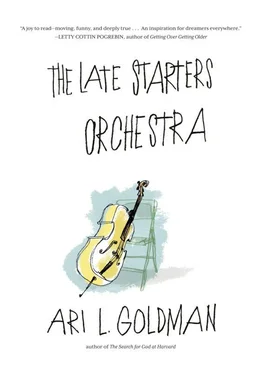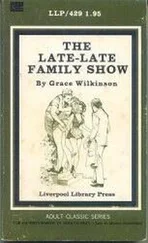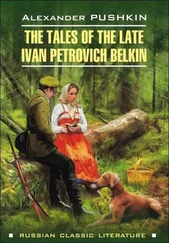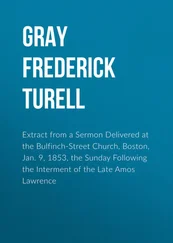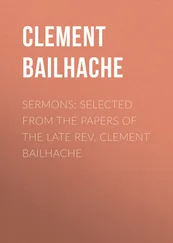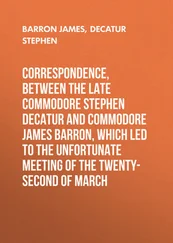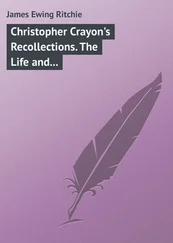And why not? Even the wedding scene in Fiddler on the Roof is broken up by the arrival of the Cossacks. It is a most happy day when, despite Tevye’s initial plan, his daughter Tzeitel marries Motel the Tailor. The scene begins with the sentimental “Sunrise, Sunset” and ends with the exuberant “Wedding Celebration and Bottle Dance.” And then, at the height of the celebration, the Cossacks arrive and upend Anatevka. Unrestrained joy is not part of Jewish culture.
The “classical” music of my youth meant one thing: the music of the synagogue. I didn’t know of Bach or Beethoven. I knew how to chant the Torah and Haftorah, ancient books that had their own musical notation and strict rules. Every word, for example, had an assigned note. Miss a note or, worse, miss a word, and the entire reading was flawed, so flawed in some cases the reading had to be done all over again. Folk music was my rebellion. It provided a relief from all that rigor and precision and allowed for easy harmonies and quick innovation. The folk musicians I loved — Pete Seeger, Woody Guthrie, Tom Paxton, Joan Baez, Judy Collins, Joni Mitchell, early Bob Dylan and, above all, Phil Ochs — wrote and sang right from the headlines. Their music was fresh and inventive (even if it occasionally all sounded the same) and broke all the rules. It shaped not only my musical tastes but my social consciousness.
I attended an all-boys ultra-Orthodox high school in Brooklyn that did its best to wall us off from the corrupting influences of modern society, but the outside world inevitably seeped in. If I gave the Beatles little attention when they first came to America in 1964, it wasn’t because I was so immersed in the study of Talmud. It was because the British imports seemed downright frivolous singing “I Want to Hold Your Hand” and “I Saw Her Standing There” when there was a war going on in Vietnam and race riots in the South. I was captivated instead by the folksingers who were fighting for peace, racial equality, and the rights of workers. Soon after my bar mitzvah in 1962, I picked up a guitar, mindful of the words scrawled on Woody Guthrie’s guitar, “THIS MACHINE KILLS FASCISTS.” I sang Ochs’s “I Ain’t Marching Anymore,” Dylan’s “Blowin’ in the Wind,” and Guthrie’s “Union Maid.” My friend Marty, a fellow yeshiva rebel, and I would take our guitars to Washington Square Park and sing our hearts out, not for the coins people tossed in our beat-up guitar cases but to feel a part of the revolution happening all around us. Marty was by far the stronger guitarist, but I had the voice. He strummed and I sang.
And then something terrible happened. My voice changed. After my sixteenth birthday, I couldn’t reach the high notes — or the low notes — and the middle range was uninspired. At first, I tried to ignore it and continued to sing my heart out, but others noticed. I was passed over for honors in the synagogue. And Marty found another singing partner.
I put down the guitar and avoided the synagogue spotlight. The voice that had given me so much pleasure — and earned me so much attention and approval — was gone. I put all my energies in high school and college into my next favorite thing: writing. While at college at Yeshiva University, I discovered the student newspaper and found I loved newspapers almost as much as I loved music. I read the daily paper voraciously. I dreamed about it at night, even imagining that I was scanning the columns of the next day’s edition. Those were my rapid eye movements. I wanted nothing more in the world than to become a newspaper reporter. In college I wrote an article about the New York Times campus correspondent at Yeshiva, a senior named Harry Weiss. In the piece, I explained how the Times, eager to know what was going on on campuses around the country, had put together a network of campus correspondents, called “stringers,” and how Yeshiva became one of them. When Harry graduated, he made me the stringer at Yeshiva.
At nineteen, I had my toe in the door of the Times and I didn’t let the door close for the next two decades. I went from being a stringer to a copy boy — the lowest editorial job in the newsroom and one that hardly exists anymore because of technology — to news clerk to news assistant to reporter trainee to reporter. I had numerous beats, but I hardly ever wrote about music, nor was it much on my agenda, that is, until one day, quite by accident, I ran into an irresistible musician who taught cello.
I was, at the time, a newly minted reporter in the newspaper’s Long Island bureau and on my way to an interview in an old office building when I knocked on the wrong door. A short, stocky man with a beautiful shock of white hair came to the door rubbing sleep from his eyes. The room behind him was dark but the light from the hallway illuminated a most beautiful wooden cello case behind him.
Forgetting why I knocked in the first place, I asked, “Do you play the cello?”
“Yes,” he said in a thick German accent, “do you want to become one of my students?”
“Yes,” I responded without hesitation.
A week later I returned to his studio, a simple room with the wooden cello case, two cellos, a viola de gamba (an early music instrument sometimes called a “cousin” of the cello), an upright piano, a tea kettle, a full-length mirror, a table, two wooden chairs, and a mattress on the floor, which the cellist used for naps between student appointments. His name was Heinrich Joachim, but I came to call him Mr. J.
“Tea or coffee?” he said when I came for my first lesson. And that became our routine. We would talk at that table over hot drinks for a few minutes and only then would we play cello. Mr. J wanted to know about my life and my ambitions before we even touched the instrument. I told him about those special Saturday morning walks with my dad on the way to synagogue, about how I lost my voice and how, in writing, I found another personal expression. “I don’t even give music much thought anymore,” I told him. “But when you opened your door and I saw you and I saw the cello, I thought this might be a way back for me.”
Mr. J was warm and reassuring. “The cello,” he said, “will give you back your voice.”
When I told him about my concern about my age — I was twenty-six at the time — he laughed gently and told me not to worry. “There is something inside you we will have to bring out. But it will take work. Many years of work. I promise you, it will be worth it.”
Mr. J was a great listener. It was harder for me to get him to open up about his life. He told me only bits and pieces. But over the years, and with the help of his children, I was able to assemble a realistic portrait of the man and his music.
HEINRICH JOACHIM WAS BORN in Berlin in 1910, the son of a Jewish doctor named Georg and a Catholic seamstress named Bertha. Heinrich was the third of seven children, all of whom played instruments from a very young age. Georg himself played the violin and organized musical evenings at home for his children and friends. Heinrich, who began piano at five, took up cello a year later. According to family lore, one day when he was eleven, Heinrich, dressed in a suit and tie with his hair slicked back with pomade, announced to the family that he was giving all his playthings to his younger brother Gerhard. “From now on I am going to devote myself to the cello,” he said in utmost seriousness. “For me, there is nothing else.” A few years later, his parents sent him off to study with Adolf Steiner, one of the leading cellists of the day, and by the time Heinrich was nineteen, he became the principal cellist of a small chamber orchestra in Berlin that was an arm of the German Ministry of Culture. The year was 1929 and Hitler’s rise to power had begun. By 1933, with Hitler firmly in control as chancellor, all members of the orchestra had to sign a loyalty oath to Hitler and the Nazi Party. Mr. J refused and lost his post.
Читать дальше
